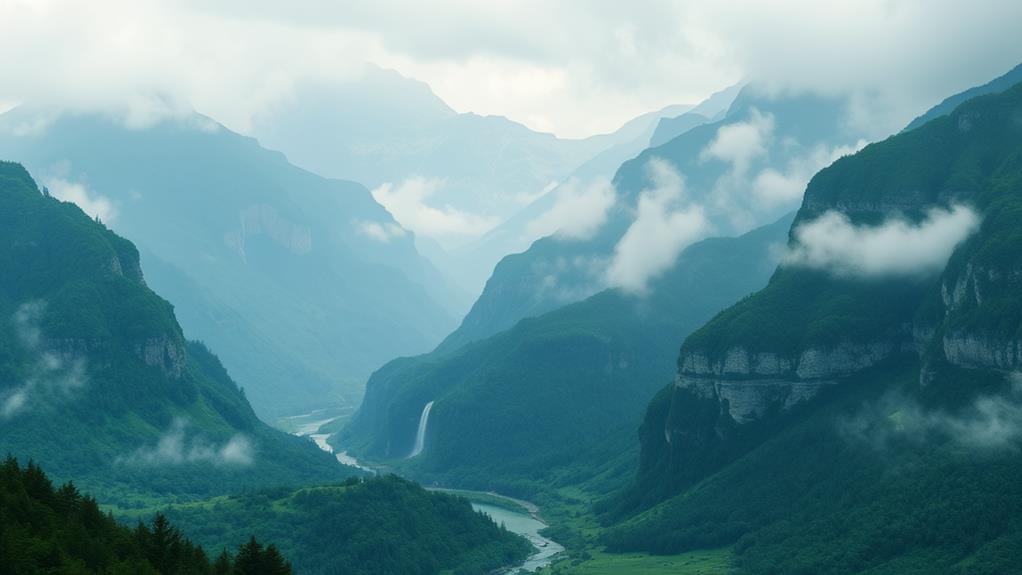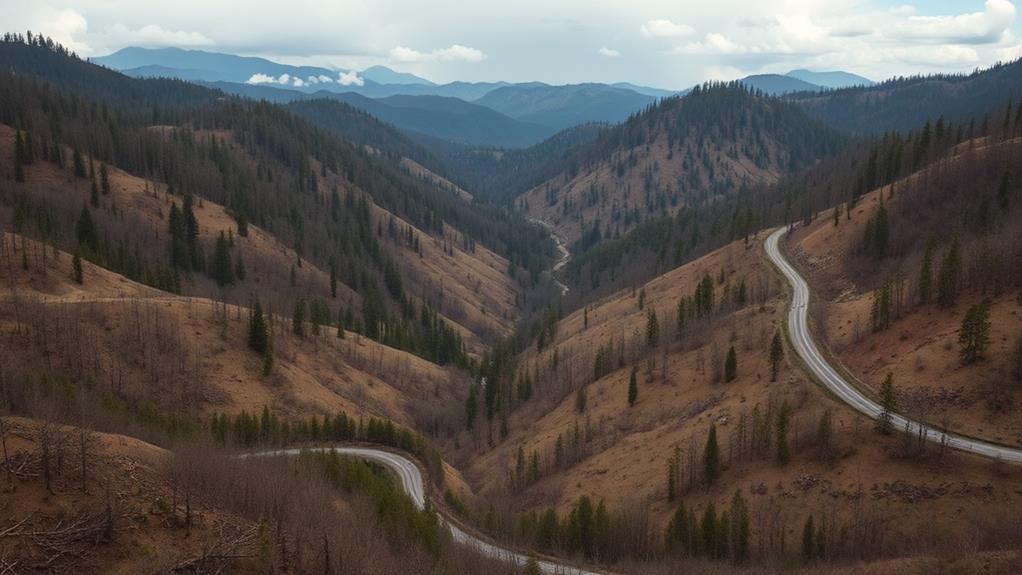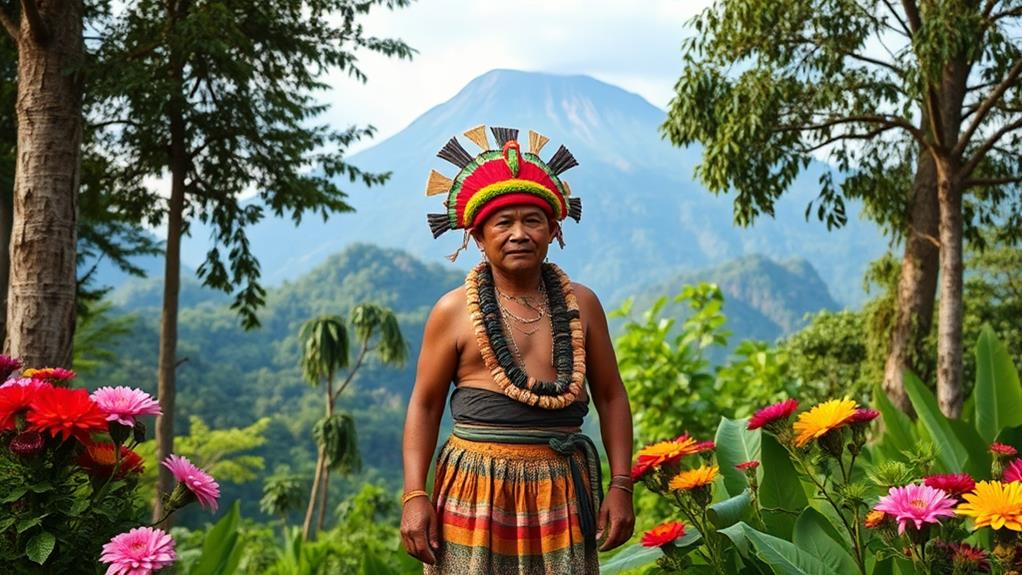The Northern Sierra Madre Natural Park in Luzon, Philippines, is a biodiversity hotspot that supports an incredible range of ecosystems, including lush rainforests, coral reefs, and mangrove ecosystems. The park is home to a stunning array of plant and animal species, many of which are endemic to the region. However, the area is facing threats from deforestation, overfishing, and illegal wildlife trade. As a result, it is crucial to emphasize the importance of conservation to protect the park’s unique ecosystems and the species that rely on them for survival. Without proper conservation efforts, the Northern Sierra Madre Natural Park is at risk of losing its rich biodiversity and ecological significance.
Over 1,500 vascular plant species thrive in this park, which provides a habitat for threatened species like the Philippine eagle and giant golden-crowned flying fox.
Covering an area of 359,486 hectares, the park plays a crucial role in maintaining ecosystem health by providing essential services like water filtration and carbon sequestration.
However, the park faces several challenges, including deforestation and habitat degradation, which are often linked to land ownership struggles.
To address these issues, collaborative management and sustainable practices are being implemented to ensure the long-term conservation of the park's rich biodiversity.
Park Overview and Geography

Location and Geography of Northern Sierra Madre Natural Park
The Northern Sierra Madre Natural Park (NSMNP) is situated within the Sierra Madre mountain range, the longest in the Philippines, and covers an area of 359,486 hectares in eastern Isabela Province.
The park's diverse landscapes include lowland dipterocarp rainforests, limestone forests, coral reefs, and mangrove ecosystems, which contribute to its rich biodiversity.
Its unique geography is bounded by the Dikatayan River to the north, the Disabungan River to the south, Cagayan Valley to the west, and the Philippine Sea to the east, enhancing its ecological significance.
The park's highest peak, Mount Cresta, rises to 1,672 meters (5,486 feet), and the region is drained by 14 major river systems, including the Palanan River.
Establishment and Boundary
Establishment of the Northern Sierra Madre Natural Park
The Northern Sierra Madre Natural Park (NSMNP) was established in 2001 through Republic Act 9125, a significant milestone in the country's environmental protection initiatives. This act adopted measures to protect significant forest lands in the region.
Boundary of the Northern Sierra Madre Natural Park
The park's boundary is well-defined, with the northern edge marked by the provincial boundary between Isabela and Cagayan, and the southern edge marked by the Disabungan River.
The western boundary aligns with the Cagayan Valley, and the eastern boundary extends to the Pacific Ocean. This encompasses diverse ecosystems within its 359,486 hectares.
Conservation Efforts
The park's creation was aimed at supporting conservation efforts and sustainable management practices, ensuring the protection of its rich biodiversity and natural resources.
Notably, the Palanan Wilderness Area was initially declared through Presidential Letter of Instruction No. 917 on August 22, 1979, before the official designation of NSMNP.
Deforestation and Drivers

Deforestation in the Northern Sierra Madre Natural Park has resulted in significant losses of forest cover. In the early 1900s, the park had 21 million hectares of forest, but by 2015, this had decreased to 7 million hectares.
Commercial logging is the main driver of deforestation, accounting for 41% of the destruction. This is followed by kaingin or slash-and-burn agriculture, biophysical factors, mining activities, and charcoal production.
Logging is the primary contributor to the loss of forest cover, facilitating the conversion of forests into agricultural land. This leads to soil erosion and increased flooding risks.
Deforestation not only results in habitat destruction and biodiversity loss but also increases the region's vulnerability to natural disasters, affecting human and ecological resilience.
The forest area has drastically decreased from 12 million hectares in the 1960s to approximately 234,374 hectares currently. This highlights the urgent need for sustainable management practices to protect the park's biodiversity.
Ecosystem Services and Threats
Ecosystem Services of the Northern Sierra Madre Natural Park
The Northern Sierra Madre Natural Park provides various ecosystem services that benefit both the environment and local communities.
Water Filtration and Regulation
The park acts as a natural water filter, improving water quality for irrigation and domestic use. This is made possible through its diverse ecosystems, which support ecological balance and maintain healthy water cycles.
Carbon Sequestration
The park serves as a vital carbon sink, helping to mitigate climate change impacts. It achieves this by stabilizing watersheds and enhancing water flow for agriculture in surrounding communities.
Disaster Risk Reduction
The Sierra Madre Mountain Range slows down storm winds, offering crucial time for evacuation during typhoons. This natural barrier provides critical protection against natural disasters.
Threats to the Park's Ecosystem Services
Despite these ecosystem services, the park faces threats from timber poaching, infrastructure development, and illegal hunting, leading to habitat loss and biodiversity degradation.
Additionally, the presence of threatened species and ongoing conflicts between conservation efforts and community livelihoods, exacerbated by migration and unsustainable farming practices, pose significant challenges to preserving the park's ecological integrity.
Indigenous Peoples and Conservation

The Northern Sierra Madre Natural Park is home to over 1,000 Agta and Dumagat Indigenous peoples, who've lived in harmony with the forest for centuries.
They rely on traditional practices like gathering, fishing, farming, and hunting to meet their basic needs. Despite having usufruct and settlement rights, these indigenous communities face challenges in achieving legal land ownership, which is complicated by the Indigenous Peoples Rights Act of 1997.
This lack of land ownership has led to the influx of migrants, resulting in practices like kaingin (slash-and-burn agriculture), which threaten the ecological balance and sustainability of the natural resources within the park.
To address these issues, the Protected Area Management Board includes representatives from the Agta and Dumagat communities. This emphasizes the need for effective policies that balance indigenous rights with conservation goals.
Collaboration and education are key to successful conservation strategies. By working together and implementing education and awareness programs, it's possible to develop strategies that ensure the sustainable management of the park's resources.
This approach prioritizes the needs of both the indigenous communities and the conservation of the natural park.
Biodiversity and Ecosystems
The Northern Sierra Madre Natural Park is a biodiversity hotspot, boasting an astonishing array of plant and animal species that have evolved over millions of years.
Within its ecosystems, you'll find over 1,500 vascular plant species, with more than 50 believed to be locally endemic to the region.
The park provides a habitat for numerous threatened and endemic animal species, including the Philippine eagle, giant golden-crowned flying fox, and Philippine crocodile.
The park's ecological significance is demonstrated through its diverse ecosystems. Lowland dipterocarp rainforests provide vital habitat for species such as turtles and estuarine crocodiles.
Montane forests support significant populations of restricted-range and threatened birds like the Whiskered Pitta and Luzon Water-redstart.
Coral reefs and mangrove forests contribute to the park's ecological balance and resilience, making NSMNP a critical area for conservation efforts.
The park's diverse ecosystems work in harmony to maintain biodiversity and ecosystem health, highlighting the importance of preserving this natural treasure.
Conservation Efforts and Management

Conservation Efforts and Management
The Northern Sierra Madre Natural Park's unique biodiversity is preserved through a multifaceted approach to conservation and management.
Protected Area Management Board
The park is governed by a Protected Area Management Board, which prioritizes preserving genetic, species, and habitat diversity within its vast 359,486 hectares.
This board ensures the park's management aligns with Republic Act 9125, also known as the NSMNP Act of 2001, which emphasizes sustainable practices and biodiversity monitoring.
Ongoing Conservation Strategies
To achieve its conservation goals, the park implements habitat restoration initiatives and collaborates with local communities to promote sustainable resource management.
As one of the Philippines' ten priority protected areas, the park's recognition highlights its critical importance for biodiversity conservation.
Supporting Organizations
BirdLife International and the Department of Environment and Natural Resources (DENR) support conservation efforts within the park, enhancing its ecological significance.
These efforts protect the park's biodiversity, ensuring the long-term sustainability of its ecosystems.
How Do Natural Parks in the Philippines Contribute to Biodiversity Conservation?
The natural parks in the Philippines, like mount kitanglad biodiversity haven, play a crucial role in biodiversity conservation. These parks provide a safe haven for a wide variety of plant and animal species, helping to protect and preserve the rich natural heritage of the country.
Threats and Challenges
The Northern Sierra Madre Natural Park's ecosystems face significant threats. Deforestation, driven primarily by commercial logging, kaingin, and illegal activities, is a major issue. These activities have led to substantial habitat loss and biodiversity decline.
The park's forest cover has drastically diminished from 21 million hectares in the early 1900s to just 234,374 hectares currently. This exacerbates the vulnerability of its unique ecosystems.
The park faces three key challenges:
Habitat degradation is an ongoing threat due to timber poaching, infrastructure development, and migration, resulting in increasing habitat degradation and conflicts between conservation efforts and local livelihoods.
Endangered species are further threatened by illegal hunting and fishing activities, such as the Philippine eagle and giant golden-crowned flying fox.
Land ownership struggles complicate effective conservation and resource management efforts in NSMNP, as Indigenous communities struggle for land ownership amidst external pressures from migration and unsustainable farming practices.
These challenges highlight the need for urgent action to protect the park's biodiversity and ecosystems.
Frequently Asked Questions
How Does Sierra Madre Protect Luzon?
Sierra Madre Protects Luzon's Ecological Balance
The Sierra Madre mountain range safeguards Luzon's ecological balance by preserving diverse habitats.
These habitats include dipterocarp rainforests and coastal marine ecosystems, which maintain crucial wildlife corridors. This allows species to thrive and interact, enhancing habitat conservation and ensuring the long-term survival of Luzon's unique biodiversity.
Sierra Madre Supports Wildlife Conservation
By protecting approximately 234,374 hectares of forest cover, the Sierra Madre supports a wide array of wildlife.
This ultimately contributes to Luzon's overall ecological health and resilience.
Why Northern Sierra Madre Natural Park Is Protected?
Northern Sierra Madre Natural Park is protected because of its immense ecological significance. The park provides a vital habitat for endemic species, and its protection ensures the preservation of biodiversity.
For instance, the park is home to the Philippine eagle, the country's national bird, which is critically endangered.
The park's protection also supports local communities through sustainable tourism practices. These practices minimize the park's ecological footprint while promoting responsible travel.
By doing so, local communities can benefit economically from tourism without compromising the park's natural resources.
Conserving Northern Sierra Madre Natural Park is crucial for the Philippines' environmental well-being. The park is part of the country's richest ecosystems, and its preservation is essential for maintaining ecological balance.
What Is the Biodiversity of the Sierra Madre?
The Sierra Madre is a biodiversity hotspot due to its unique combination of ecosystems, including rainforests and montane forests.
Over 50% of Mexico's species can be found in this region, many of which are endemic, meaning they're found nowhere else on the planet.
The diverse ecosystems present here support a wide range of plant and animal life, including over 3,000 plant species and more than 500 bird species.
To protect this unique biodiversity, conservation efforts are essential to preserve the habitats of these species and ensure their long-term survival.
Why Are the Sierra Madre Mountains Important to the Philippines?
The Sierra Madre Mountains are crucial to the Philippines due to their ecological importance. They host a diverse range of flora and fauna, including many endangered species. For example, the mountains are home to the Philippine eagle, one of the world's largest and most critically endangered eagles.
The Sierra Madre Mountains also preserve cultural heritage. They're inhabited by indigenous communities that maintain traditional practices, such as the Agta people who've lived in the mountains for thousands of years. These communities rely on the forest for their livelihood, using sustainable methods to harvest forest products.
The mountains serve as a natural barrier against typhoons. They absorb the impact of strong winds and heavy rainfall, protecting low-lying areas from damage and flooding.
They also stabilize watersheds, supplying essential economic resources. The mountains are the source of many rivers, which provide water for agriculture, domestic use, and hydroelectric power. For instance, the Cagayan River, which originates in the Sierra Madre, irrigates vast agricultural lands and supports the livelihood of thousands of farmers.